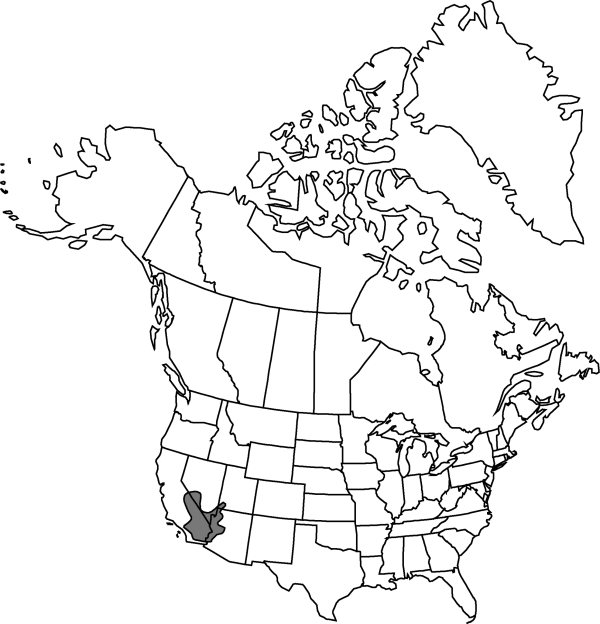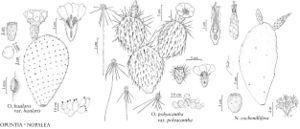Difference between revisions of "Opuntia basilaris var. basilaris"
Illustrated
Synonyms: Opuntia basilaris var. ramosa Opuntia whitneyana
FNA>Volume Importer |
imported>Volume Importer |
||
| (7 intermediate revisions by 2 users not shown) | |||
| Line 1: | Line 1: | ||
{{Treatment/ID | {{Treatment/ID | ||
|accepted_name=Opuntia basilaris var. basilaris | |accepted_name=Opuntia basilaris var. basilaris | ||
| − | |accepted_authority= | + | |accepted_authority= |
|publications= | |publications= | ||
| + | |special_status={{Treatment/ID/Special_status | ||
| + | |code=F | ||
| + | |label=Illustrated | ||
| + | }} | ||
|basionyms= | |basionyms= | ||
|synonyms={{Treatment/ID/Synonym | |synonyms={{Treatment/ID/Synonym | ||
|name=Opuntia basilaris var. ramosa | |name=Opuntia basilaris var. ramosa | ||
| − | |authority= | + | |authority= |
| − | }}{{Treatment/ID/Synonym | + | |rank=variety |
| + | }} {{Treatment/ID/Synonym | ||
|name=Opuntia whitneyana | |name=Opuntia whitneyana | ||
| − | |authority= | + | |authority= |
| + | |rank=species | ||
}} | }} | ||
|hierarchy=Cactaceae;Cactaceae subfam. Opuntioideae;Opuntia;Opuntia basilaris;Opuntia basilaris var. basilaris | |hierarchy=Cactaceae;Cactaceae subfam. Opuntioideae;Opuntia;Opuntia basilaris;Opuntia basilaris var. basilaris | ||
| Line 18: | Line 24: | ||
}}<!-- | }}<!-- | ||
| − | --><span class="statement" id="st- | + | --><span class="statement" id="st-undefined" data-properties=""><b>Stem </b>segments erect, flattened, obovate, 7–22(–35) × 6.5–13.5(–16) cm; areoles (8–)10–16(–19) per diagonal row across midstem segment, circular. <b>Spines</b> absent or very rarely 1–few very short spines per stem segment. <b>Fruits</b> spineless. <b>2n</b> = 22.</span><!-- |
-->{{Treatment/Body | -->{{Treatment/Body | ||
| + | |phenology=Flowering late winter–spring (Feb–Jun). | ||
|habitat=Chaparral, woodlands, desert flats, hills, sandy to rocky soils | |habitat=Chaparral, woodlands, desert flats, hills, sandy to rocky soils | ||
|elevation=300-1700 m | |elevation=300-1700 m | ||
| Line 32: | Line 39: | ||
-->{{#Taxon: | -->{{#Taxon: | ||
name=Opuntia basilaris var. basilaris | name=Opuntia basilaris var. basilaris | ||
| − | + | |authority= | |
| − | |authority= | ||
|rank=variety | |rank=variety | ||
|parent rank=species | |parent rank=species | ||
| Line 39: | Line 45: | ||
|basionyms= | |basionyms= | ||
|family=Cactaceae | |family=Cactaceae | ||
| + | |phenology=Flowering late winter–spring (Feb–Jun). | ||
|habitat=Chaparral, woodlands, desert flats, hills, sandy to rocky soils | |habitat=Chaparral, woodlands, desert flats, hills, sandy to rocky soils | ||
|elevation=300-1700 m | |elevation=300-1700 m | ||
| Line 45: | Line 52: | ||
|publication title= | |publication title= | ||
|publication year= | |publication year= | ||
| − | |special status= | + | |special status=Illustrated |
| − | |source xml=https:// | + | |source xml=https://bitbucket.org/aafc-mbb/fna-data-curation/src/2e0870ddd59836b60bcf96646a41e87ea5a5943a/coarse_grained_fna_xml/V4/V4_275.xml |
|subfamily=Cactaceae subfam. Opuntioideae | |subfamily=Cactaceae subfam. Opuntioideae | ||
|genus=Opuntia | |genus=Opuntia | ||
|species=Opuntia basilaris | |species=Opuntia basilaris | ||
|variety=Opuntia basilaris var. basilaris | |variety=Opuntia basilaris var. basilaris | ||
| − | |||
| − | |||
| − | |||
| − | |||
| − | |||
| − | |||
| − | |||
| − | |||
| − | |||
| − | |||
| − | |||
| − | |||
| − | |||
}}<!-- | }}<!-- | ||
-->[[Category:Treatment]][[Category:Opuntia basilaris]] | -->[[Category:Treatment]][[Category:Opuntia basilaris]] | ||
Latest revision as of 22:57, 5 November 2020
Stem segments erect, flattened, obovate, 7–22(–35) × 6.5–13.5(–16) cm; areoles (8–)10–16(–19) per diagonal row across midstem segment, circular. Spines absent or very rarely 1–few very short spines per stem segment. Fruits spineless. 2n = 22.
Phenology: Flowering late winter–spring (Feb–Jun).
Habitat: Chaparral, woodlands, desert flats, hills, sandy to rocky soils
Elevation: 300-1700 m
Distribution

Ariz., Calif., Nev., Utah, n Mexico.
Discussion
Selected References
None.
Lower Taxa
None.
